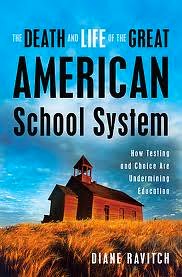The only thing Internet Explorer is good for, is downloading Firefox or Google Chrome.
And it’s not very good at that either.
The only thing Internet Explorer is good for, is downloading Firefox or Google Chrome.
And it’s not very good at that either.
I’ve written about Charter schools being a non-starter in the debate about education reform here.
In today’s Washington Post, there’s more proof of what nobody says on cable television–poor performing students drop out of KIPP and go back to public schools.
In fact KIPP failed to hack it in the same playing field as Public Schools. Here is Richard D. Kahlenberg’s piece from the Washington Post Today:
Alan Levine of CogDogBlog posted a wonderful explanation video of what a Massive Open Online Course (MOOC) is today.
I’ve been a student in several Open online courses, as well as been a professor in what Lisa Lane calls an Open-Closed course (The closed part dictated by the sponsoring university.) I’ve participated in the same course with Lisa. It was the course of Alec Couros, from whom I took one of the Open courses.
I’ve tried to create online communities with an earlier version of Clairvoy, which was modestly successful for a time. It was quickly eclipsed by organizations with vested interests and money.
So the MOOC seems to be the way to go if one is just a bunch of folks interested in the same subject.
Lisa outlins here what she calls “Open-Open MOOCS,” “Open-Closed MOOCS,” and “Closed-Closed MOOCS.”
According to Lisa, “Open-Open MOOCS” are like what others have called Online Professional Learning Communities.
Open-Closed MOOCS are what happens when a University has an online class and opens it to anyone to participate.
Closed-Closed MOOCS are what happens when forward thinkers in an organization have plans to do one of the first two models, but are shut down by their sponsoring organization and the networking component is lost.
We should consider creating Open-Closed MOOCS (Which are Open MOOCs with some structure) to promote professional collaboration. I’ve been trying Open-Open and it just doesn’t give enough structure.
Open-Closed MOOCS is one model which might work.
On-the-fly video translations. Unplugged (no Internet or phone connections needed).
This is where we are technologically. This is what many students and teachers can have, now, today. Think about this sort of technology the next time you are using Blackboard to share anything…
questvisual.com
cost: $4.99
Here’s the video if you don’t see it in your RSS Reader:
Currently I’m reading Diana Ravitch, and all of Che Guevara.

http://www.flickr.com/photos/clairvoy/5227016296/

http://www.flickr.com/photos/clairvoy/5226419701/
I think my brain is working on something my mind isn’t telling me …